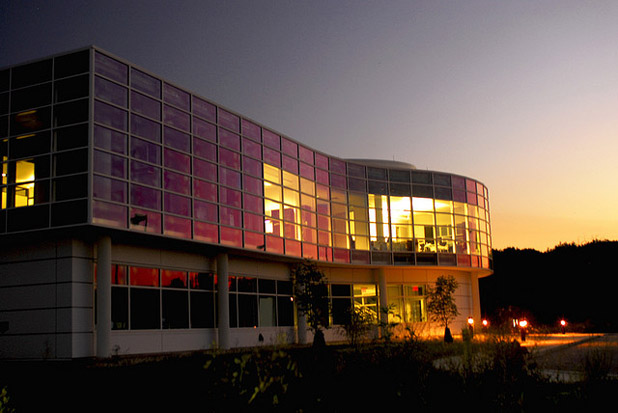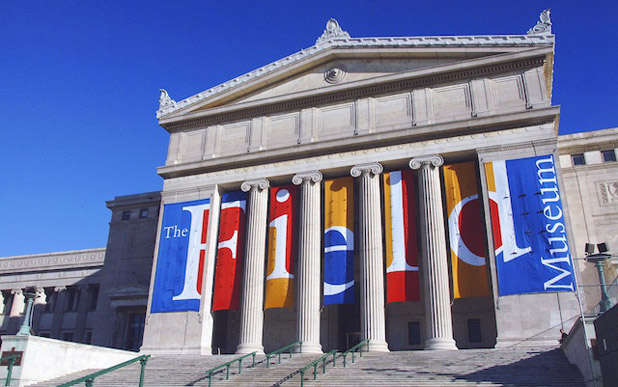When someone thinks about Chicago, the first thing that comes to mind might be its picturesque skyline on the shores of Lake Michigan; its tantalizing Chicago-style hotdogs or deep-dish pizza; its amazing assemblage of museums; its stunning architecture; or one of its three major research institutions. The Chicago Biomedical Consortium (CBC) is now starting to draw its share of the limelight, too, as a hotbed for biomedical research.
Although it had its official start less than a decade ago, the CBC, a joint enterprise of Chicago’s major research universities, has amassed an impressive collection of statistics. It has provided about $30 million in grants to some 100 research groups. Those groups have not only produced more than 800 peer-reviewed papers, but have also generated an additional $275 million in federal and other non-CBC funding. In addition, the consortium has supported more than three dozen outstanding students as CBC Scholars.
The CBC’s origins can be traced to a 2001 challenge issued by philanthropist Dan Searle. “He asked leading faculty members at Chicago’s three major research universities—Northwestern, the University of Chicago, and the University of Illinois at Chicago—to figure out a way that they could use a substantial amount of funding to really strengthen the Chicago research enterprise,” recalls Kathryn C. Stallcup, Ph.D., executive director of the CBC. Extensive brainstorming led to a planning grant and demonstration project that ultimately landed a generous infusion of monies from the Searle Funds at The Chicago Community Trust in 2006.
Since then, researchers from multiple disciplines have received CBC funding to start new biomedical projects. At the same time, scientists and engineers from the three research universities began developing strong cross-institution relationships. In May 2014, that collaborative spirit enveloped facilities with the announcement of a new Open Access Initiative, which makes the entire suite of core facilities at the three campuses open to users from the partner universities.
“Before the initiative came into being, if you were an investigator at Northwestern and wanted to use the next-generation sequencing facility at the University of Chicago, for instance, you would have to pay what it costs to run the samples and do the experiment, and you’d also have to pay the overhead/facilities-and-administration additional charges which can tack on an additional 50 percent. Now, those extra charges have been waived,” Stallcup says.
The CBC has also added summer workshops (this summer’s workshop is on proteomics and informatics), and an annual symposium. The 2014 symposium is titled “Protein Engineering: From computers to cells to clinic,” and will be held 17 October on the University of Illinois at Chicago campus.
In the CBC’s nine short years, Stallcup says, “We now have a wonderful sense of cooperation between the three universities that really is the rule rather than the exception.” That even extends to the technology transfer and development offices. The universities’ tech transfer offices work together on a number of joint programs that have fostered entrepreneurship and commercialization, and the development offices have undertaken some cooperative work, she says. A healthy competition still exists between the three universities, but it has become tempered by a new perspective, she says. “There’s a deep recognition now that there are plenty of ways that the universities can all benefit from working together, that the whole is greater than the sum of the parts. That’s definitely one of the many cool things about the CBC.”
More information about the Chicago Biomedical Consortium and the varied research projects it has supported is available on the CBC website.
Kathryn Stallcup’s Pick: Architecture Cruise
“The Chicago Architecture Foundation runs cruises that are superb,” says Stallcup. Led by foundation-certified volunteers, the tours discuss the history of Chicago through descriptions of more than 50 buildings along the Chicago River.
Chicago’s Science Connection: Places to Go, Other Highlights
Argonne National Library

One of the nation’s major science and engineering research centers, Argonne brings together specialists from industry, academia, and government agencies to work on an enormous variety of technological issues “from high-energy physics and materials science to structural biology and advanced computer science.” Since its inception in 1946 as the first science and engineering research national laboratory in the country, it has been behind many important scientific discoveries. Its contributions to science continue today. For instance, Argonne is home to the Advanced Photon Source, an extremely high-energy light source that has allowed scientists to characterize organic and inorganic materials and processes. In addition, it is one of five U.S. Department of Energy Office of Science Nanoscale Science Research Centers and one of three DOE-supported scientific user facilities for electron beam microcharacterization, and has a user facility that specializes in micromolecular crystallography, which is used to map out the crystal structures of a wide variety of proteins. Find more information on the Argonne National Laboratory website.
Amos Alonzo Staff Field at the University of Chicago
The original Stagg Field (the university now has a second, newer Stagg Field) has a place in history as the site of the first self-sustaining nuclear chain reaction. Led by famed physicist Enrico Fermi, a team of scientists constructed the world’s first nuclear reactor, called Chicago Pile-1, on a squash court under the Stagg Field football stands. Chicago Pile-1 achieved a nuclear reaction on Dec. 2, 1942, marking the dawn of the atomic age and of nuclear medicine. The site is now a National Historic Landmark and listed on the National Register of Historic Places, and is commemorated with a sculpture by noted artist Henry Moore.
International Museum of Surgery
The International Museum of Surgery has an immense, four-floor collection of instruments and other artifacts, illustrations, and artworks “portray the mysteries, breakthroughs, failures, and milestones that have shaped modern surgical science.” Exhibits include surgical techniques from around the world and perspectives from over the centuries, and examine such topics as orthopedics, polio, medical imaging, medical careers, surgicogemonics, and the skeletal system.
Bioengineering Institute for Advanced Surgery and Endoscopy
A collaboration between the University of Chicago and Argonne, this institute’s focus is on improving and developing tools and other technologies to advance surgical capabilities. These include enhanced visualization techniques using near-real-time computer simulation as well as synthetic materials and biomaterials with a variety of characteristics, such as providing bacteria-fighting properties to treat infections and offering frictionless surfaces for structural implants. Find out more at the Bioengineering Institute for Advanced Surgery and Endoscopy website.
Museum of Science and Industry
Housed in the former Palace of Fine Arts, which was constructed for the World’s Columbian Exposition in 1893, Chicago’s Museum of Science and Industry is one of the world’s largest science museums. Inside, visitors have many choices, including exhibits such as “YOU! The Experience,” which provides hands-on activities to explore what it means to live a vital, healthy life in the 21st century, and “Genetics and the Baby Chick Hatchery,” which helps visitors discover the roles of genetics and environmental factors through developmental stages. A selection of exciting films is always on tap in the museum’s enormous, five-domed, Omnimax theater.
The Field Museum

The best-preserved, largest, and most complete fossil of a Tyrannosaurus rex welcomes visitors to The Field Museum in Chicago, one of the largest natural history museums in the world. Besides spectacular zoological, botanical, and cultural collections spanning history, the museum has numerous special exhibits for children and for adults. Current exhibits include “The Machine Inside: Biomechanics” on natural engineering; a giant-screen production of “Tiny Giants 3D” that examines small creatures and their struggle for survival; and “Before the Dinosaurs: Tracking the Reptiles of Pangea” that describes how paleontologists look back in time and what they can learn about Earth’s natural history.
Shedd Aquarium
With more than 32,000 animals representing 1,500 species, the Shedd Aquarium has one of the largest and most diverse collections of aquatic animals in the world, and represents one of the largest indoor aquariums anywhere. Besides the breathtakingly beautiful exhibits, the aquarium offers what it calls “Extraordinary Experiences,” which include personal encounters with penguins and beluga whales.
Peggy Notebaert Nature Museum
A favorite exhibit at the Peggy Notebaert Nature Museum is the 2,700-square-foot greenhouse—called the Judy Istock Butterfly Haven—and the more than 1,000 butterflies in 75 species that call it home. Other excellent exhibits include: Nature’s Struggle: Survival & Extinction, which contrasts biodiversity in 1820, 1905, and 2014 to help visitors learn about the changes over time, the reasons for those changes, and the repercussions of everyday actions; and the Beecher Collections Laboratory, which allows visitors to watch scientists as they prepare specimens.
World Business Chicago
World Business Chicago is a not-for-profit economic development organization that strives to promote the Windy City as an opportune location for business and to heighten economic growth. One of World Business Chicago’s major initiatives is ChicagoNEXT, which is directed at accelerating science, innovation, and technology entrepreneurship. Bioscience is a primary focus of ChicagoNEXT. The initiative not only draws new talent to the city, but also works to match inventors and investors, and builds Chicago’s reputation as a hub for science and technology endeavors.



